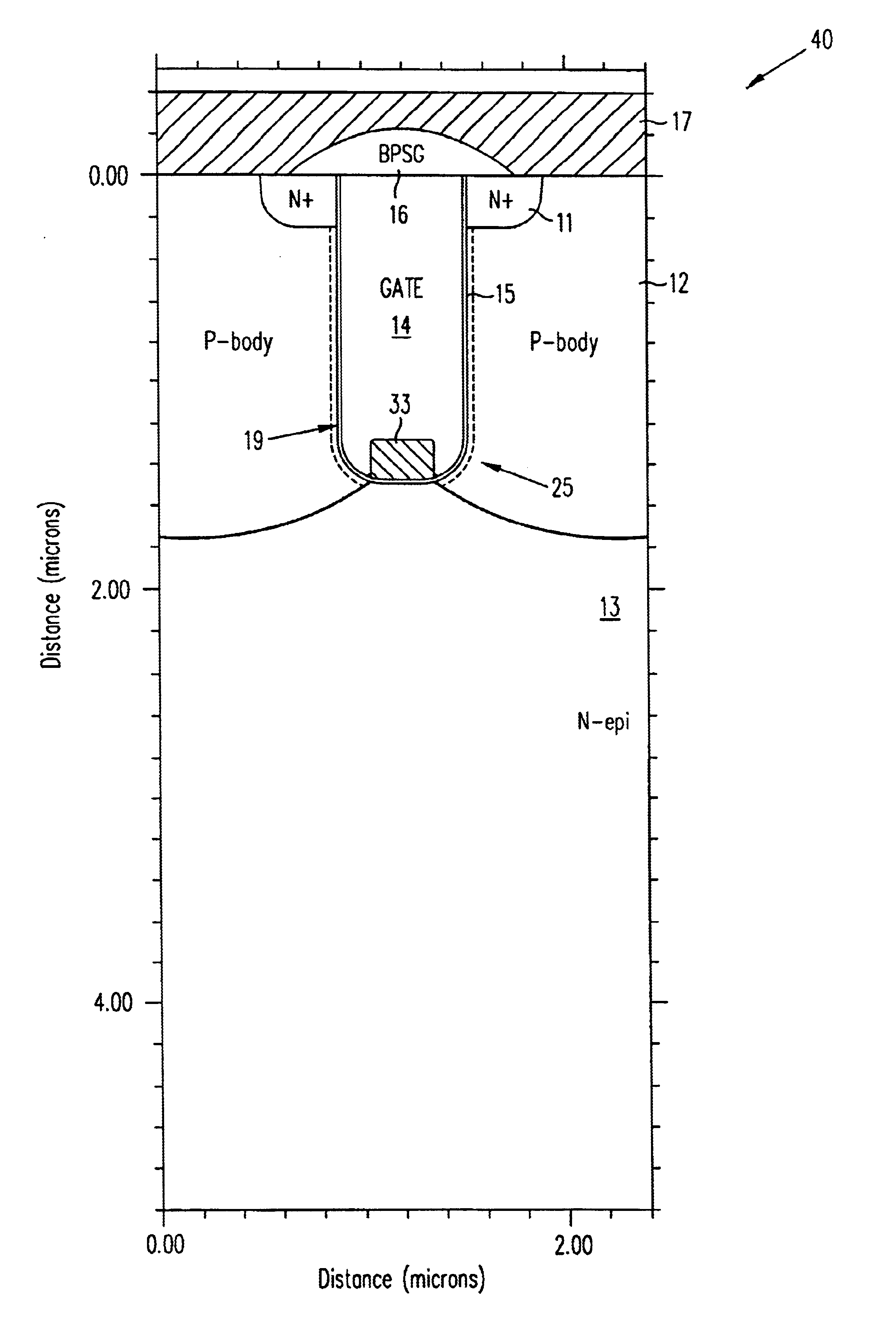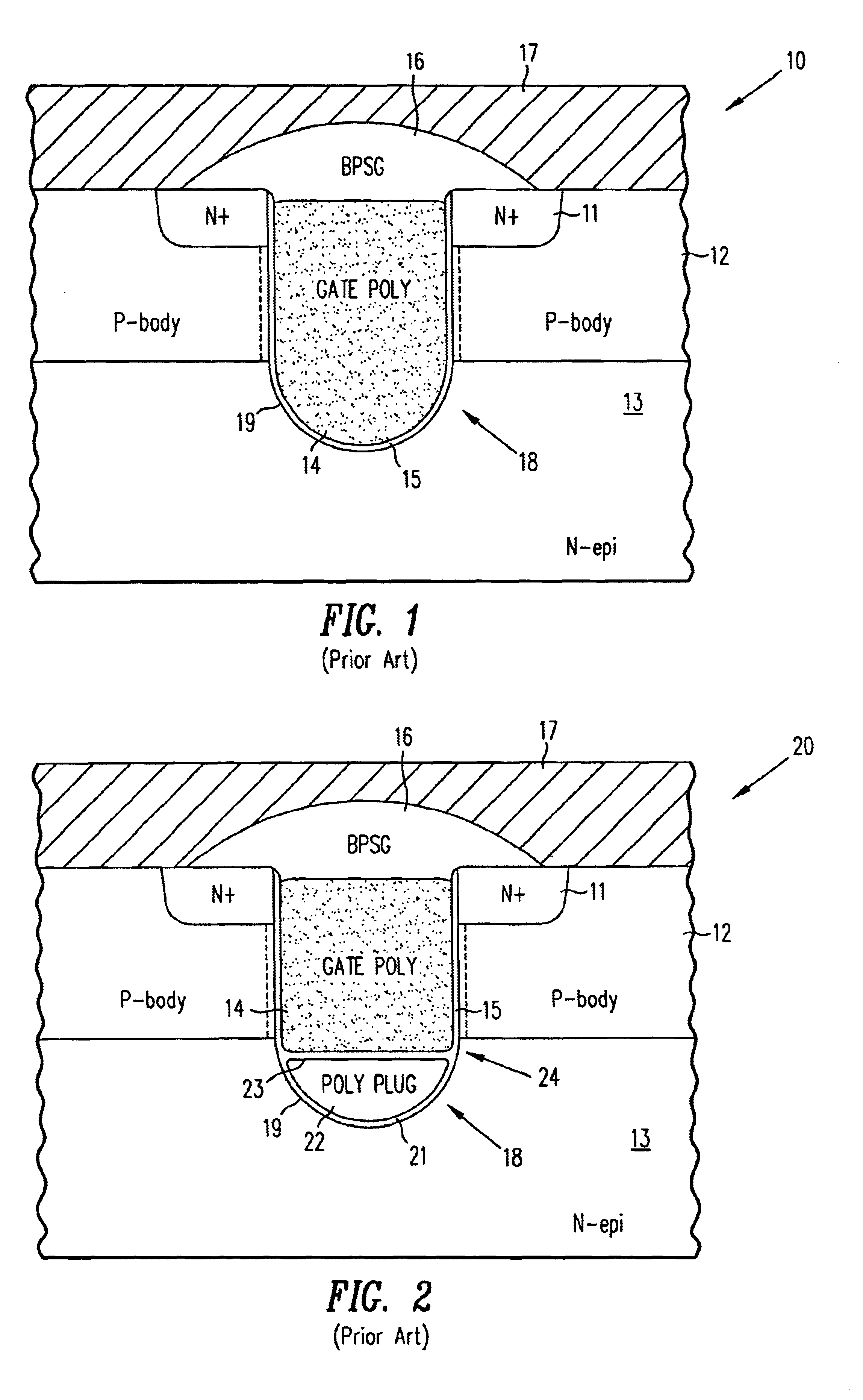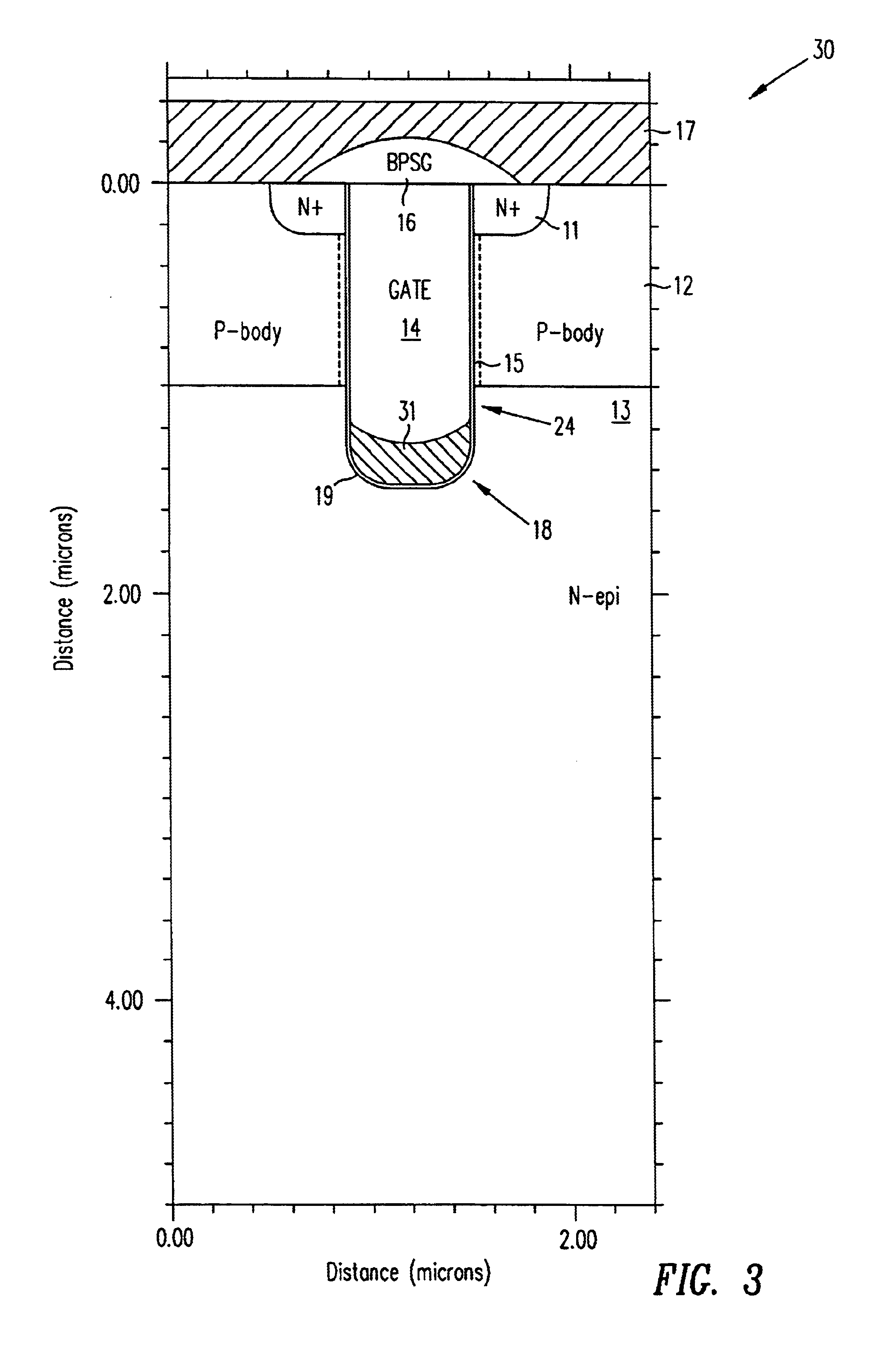Trench MIS device with active trench corners and thick bottom oxide
a technology of mis and trench, applied in the direction of semiconductor devices, transistors, electrical devices, etc., can solve the problems of reducing the internal capacitance of the mosfet, increasing the current carrying capacity, and reducing the on-resistance of the device, so as to reduce the gate-to-drain capacitance
- Summary
- Abstract
- Description
- Claims
- Application Information
AI Technical Summary
Benefits of technology
Problems solved by technology
Method used
Image
Examples
Embodiment Construction
FIG. 4 is a cross-sectional view of one embodiment of a trench MOSFET 40 in accordance with the present invention. In MOSFET 40, an n-type epitaxial (“N-epi”) layer 13, which may be an N− layer and is usually grown on an N+ substrate (not shown), is the drain. A p-type body region 12 separates N-epi layer 13 from N+ source regions 11. Body region 12 is diffused along the sidewall of a trench 19, past a corner region 25, and partially long the bottom of trench 19. Current flows vertically through a channel (denoted by the dashed lines) along the sidewall and around corner region 25 of trench 19.
The sidewall and corner region 25 of trench 19 are lined with a thin gate insulator 15 (e.g., silicon dioxide). An oxide plug 33 is centrally located in the bottom of trench 19. Trench 19 is filled with a conductive material, such as doped polysilicon, which forms a gate 14. Gate 14 extends into corner region 25 of trench 19, between oxide plug 33 and gate insulator 15. Trench 19, including ga...
PUM
 Login to View More
Login to View More Abstract
Description
Claims
Application Information
 Login to View More
Login to View More - R&D
- Intellectual Property
- Life Sciences
- Materials
- Tech Scout
- Unparalleled Data Quality
- Higher Quality Content
- 60% Fewer Hallucinations
Browse by: Latest US Patents, China's latest patents, Technical Efficacy Thesaurus, Application Domain, Technology Topic, Popular Technical Reports.
© 2025 PatSnap. All rights reserved.Legal|Privacy policy|Modern Slavery Act Transparency Statement|Sitemap|About US| Contact US: help@patsnap.com



